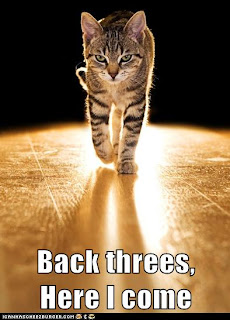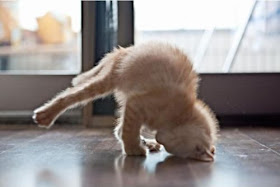You've had a good year skating. Maybe you've had some major advances. You're in love with skating; it's changed your life.
Now, what do you give the coach who helped you do all that for Christmas?
First off, you're under no social or customary obligation to give either your group coach or your private coach a gift for Christmas or birthdays. However, it's a nice and generous gesture. But don't get wrapped around the axel over it (hee hee). It can be as simple as you want.
I've veered away from giving anything personal like a skate bag or gloves. If a coach has kid students he or she will probably get lots of gloves, personalized blade rags, or earmuffs from the kids. You're an adult, you can give an adult gift. And skate bags are too personal. You don't know what the coach needs or prefers.
The easiest thing is to pay attention during the year and make some mental notes.
I've known coaches who drop some pretty broad hints starting in November. I knew one who liked a particular brand of liquor and all his new students were told that by other students, so problem solved.
Other coaches show up with a cup of Starbucks or Dunkin Donuts coffee every morning. Gift Card! Problem solved.
But suppose you don't have a clue. You missed the student gossip chain, and your coach drinks water, what do you do?
Everyone likes a gift of home made cookies or food. Even if it doesn't make it out of the pro's locker room because everyone dives in, it's always a nice gesture.
Gift cards to Amazon can be a real benefit to a coach who needs something.
ITunes gift cards are nice too, especially to a coach who does a lot of programs.
Gifts of a massage or a card to a restaurant can also be a generous and welcome gesture.
And finally, there's nothing wrong with cash. Cold hard cash in a nice card thanking the coach for all their efforts over the last year. I usually give an amount equal to about one lesson, although there's absolutely no expectation. Some coaches have pretty precarious finances, I'm sure they welcome cash more than anything else. A coach who is making a decent living from coaching might be surprised or mildly offended, so of course, use your judgement
So far, I've been talking about private coaches. What about group coaches?
There's a lot of variety here. I've been in group programs where the coach changes every other week. I've never felt under any compunction to make a gift in that circumstance. It's nice if a student shows up with cookies to share with the class and coach, but a personal gift? Not from me. On the other hand I've seen situations where a group of students has been taking group lessons from the same coach for a long time. In that case it's not unknown for the group or individuals to make small personal gifts.
What about giving gifts with a 'skating theme'? I have to say, I suspect coaches already have tons of stuff with skating themes to it. Remember, coaching is their job; it's your hobby. Their hobby may be fishing or fantasy football or bowling. Don't confuse your passion with their passion. In the years I've been skating I've only given one skating themed gift (a pair skating Christmas ornament) to a coach I had know for five years, who I was certain would like it. Otherwise, I didn't give skating themed gifts.
If you have a child who wants to give a coach a gift, you can of course guide the child, but I've seem coaches wear some amazing hats, gloves, and earmuffs in January, so don't worry. Every coach I've known has been a good sport about it no matter what the gift is.
 |
Just last week I saw a *male* coach in this hat!
And that reminded me to write this post! |
|
Don't expect a gift from your coach. This is like giving a gift to your child's teacher, they usually don't give gifts that are more than a card and a piece of candy.
[And a personal note to readers who have been following my knee injury. Diagnosis: minor meniscus tear. Treatment: Industrial strength anti-inflammatories, rest. Back on ice (not lessons) in 10 days to see if I can gently skate, then lessons after follow-up in January.]












































